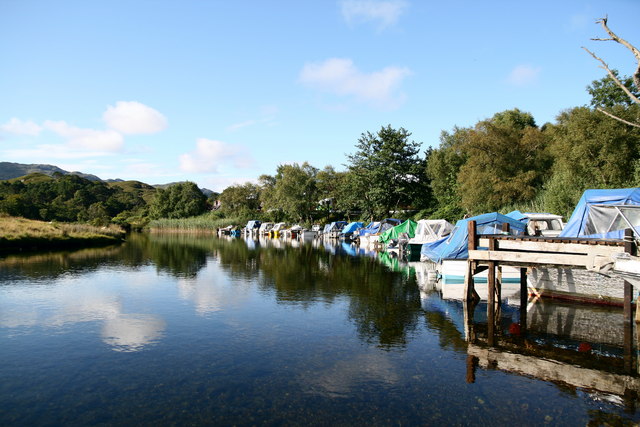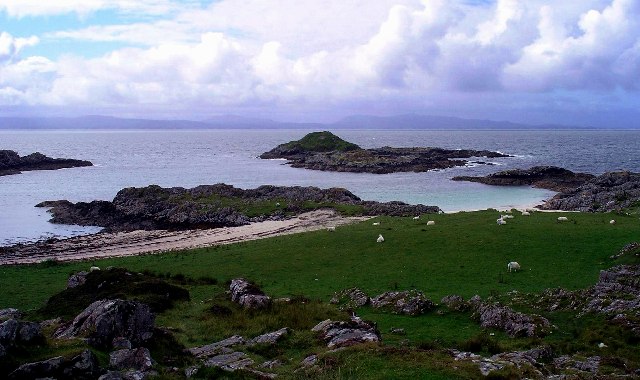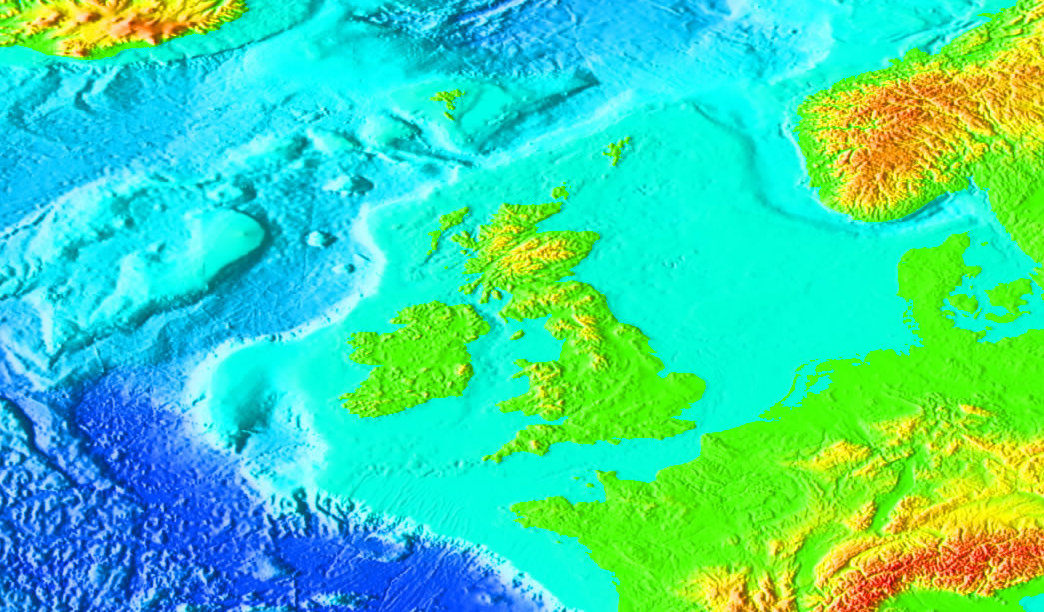|
Morar
Morar (; gd, Mòrar) is a small village on the west coast of Scotland, south of Mallaig. The name Morar is also applied to the northern part of the peninsula containing the village, though North Morar is more usual (the region to the south west of Loch Morar is known as Arisaig, rather than ''South Morar''). The coastline of the area forms part of the Morar, Moidart and Ardnamurchan National Scenic Area, one of 40 such areas in Scotland, which are defined so as to identify areas of exceptional scenery and to ensure its protection by restricting certain forms of development. Morar has a railway station on the West Highland Line and is by-passed by the A830, part of the Road to the Isles, between Fort William and Mallaig. The village was formed of the farms and crofts of Bourblach, Beoraid Beg and Beoraid Mor with the modern village growing up around the railway station of Morar during the 20th century. The 1911 census suggests that the village name was not yet in regular u ... [...More Info...] [...Related Items...] OR: [Wikipedia] [Google] [Baidu] |
Loch Morar
Loch Morar (Scottish Gaelic: Loch Mòrair) is a freshwater loch in Lochaber, Highland, Scotland. It is the fifth-largest loch by surface area in Scotland, at , and the deepest freshwater body in the British Isles with a maximum depth of . The loch was created by glacial action around 10,000 years ago, and has a surface elevation of above sea level. It separates the traditional district of North Morar (which contains the village of Morar), from Arisaig and Moidart. Geography Loch Morar is long, has a surface area of , and is the deepest freshwater body in the British Isles with a maximum depth of . In 1910, John Murray and Laurence Pullar found it to have a mean depth of and a total volume of during their survey of Scottish lochs. The bottom is deepened below the United Kingdom Continental Shelf, and until 1943, when a depth of was observed in the Inner Sound, it was believed to be the deepest water in the United Kingdom. The surface of the loch is above sea level. ... [...More Info...] [...Related Items...] OR: [Wikipedia] [Google] [Baidu] |
River Morar
The River Morar is a river that flows from Loch Morar in the west Highlands of Scotland. It flows from the western end of the loch to the estuary of Morar Bay, an inlet of the Sound of Sleat. At less than 1 km in length (at high tide), the River Morar is one of the shortest rivers in Scotland. The river is crossed by three bridges: one carrying the A830 trunk road, an older bridge for the B8008 road, and one for the West Highland Line railway. The railway viaduct dates from 1897, and is a Category B listed building. The River Morar is the boundary between the parishes of Glenelg (to the north) and Arisaig and Moidart (to the south). Falls of Morar As the River Morar crosses over the rock bar at the end of the loch it forms a series of waterfalls known as the Falls of Morar. Hydroelectric power station A 750 kW hydroelectric power station with a hydraulic head of was built on the River Morar in 1948. References Morar Morar (; gd, Mòrar) is a small vil ... [...More Info...] [...Related Items...] OR: [Wikipedia] [Google] [Baidu] |
Morar, Moidart And Ardnamurchan National Scenic Area
Morar, Moidart and Ardnamurchan is a national scenic area (NSA) covering the coastal scenery of three peninsulas in the western Highlands of Scotland: Ardnamurchan, Moidart and Morar. It is one of 40 such areas in Scotland, which are defined so as to identify areas of exceptional scenery and to ensure its protection from inappropriate development by restricting certain forms of development. The Morar, Moidart and Ardnamurchan NSA covers 36,956 ha in total, consisting of 17,220 ha of land with a further 19,736 ha being marine (i.e. below low tide). National scenic areas are primarily designated due to the scenic qualities of an area, however NSAs may well have other special qualities, for example related to culture, history, archaeology, geology or wildlife. Areas with such qualities may be protected via other national and international designations that overlap with the NSA designation. Morar, Moidart and Ardnamurchan includes several Natura 2000 sites within t ... [...More Info...] [...Related Items...] OR: [Wikipedia] [Google] [Baidu] |
Morar Railway Station
, symbol_location = gb , symbol = rail , image = Morar station.jpg , caption = Morar railway station, looking towards the level crossing and Arisaig , borough = Morar, Highland , country = Scotland , coordinates = , grid_name = Grid reference , grid_position = , manager = ScotRail , platforms = 1 , code = MRR , original = Mallaig Extension Railway of West Highland Railway , pregroup = North British Railway , postgroup = LNER , years = 1 April 1901 , events = Station opened , mpassengers = , footnotes = Passenger statistics from the Office of Rail and Road Morar railway station is a railway station serving the village of Morar in the Highland region of Scotland. This station is on the West Highland Line, between Arisaig and Mallaig, from the former Banavie Junct ... [...More Info...] [...Related Items...] OR: [Wikipedia] [Google] [Baidu] |
Mallaig
Mallaig (; gd, Malaig derived from Old Norse , meaning sand dune bay) is a port in Lochaber, on the west coast of the Highlands of Scotland. The local railway station, Mallaig, is the terminus of the West Highland railway line (Fort William and Mallaig branch) and the town is linked to Fort William by the A830 road – the " Road to the Isles". Development The village of Mallaig was founded in the 1840s when Lord Lovat, owner of North Morar Estate, divided up the farm of Mallaigvaig into 17 parcels of land and encouraged his tenants to move to the western part of the peninsula and turn to fishing as a way of life. The population and local economy expanded rapidly in the 20th century with the arrival of the railway. Ferries operated by Caledonian MacBrayne and Western Isles Cruises sail from the port to Armadale on the Isle of Skye, Inverie in Knoydart, Lochboisdale on South Uist and the isles of Rùm, Eigg, Muck, and Canna. Mallaig is the main commercial fis ... [...More Info...] [...Related Items...] OR: [Wikipedia] [Google] [Baidu] |
Local Hero (1983 Film)
''Local Hero'' is a 1983 Scottish comedy-drama film written and directed by Bill Forsyth and starring Peter Riegert, Denis Lawson, Fulton Mackay and Burt Lancaster. Produced by David Puttnam, the film is about an American oil company representative who is sent to the fictional village of Ferness on the west coast of Scotland to purchase the town and surrounding property for his company. For his work on the film, Forsyth won the 1984 BAFTA Award for Best Direction. A stage musical adaptation received its world premiere in 2019. In the same year a Criterion Collection DVD/Blu-ray was released in September. Plot "Mac" MacIntyre is a typical 1980s hot-shot executive working for Knox Oil and Gas in Houston, Texas. The eccentric head of the company, Felix Happer, sends him (largely because his surname sounds Scottish) to acquire the village of Ferness in the Scottish Highlands to make way for a refinery. Mac (who is actually of Hungarian extraction) is a little apprehensive about h ... [...More Info...] [...Related Items...] OR: [Wikipedia] [Google] [Baidu] |
West Highland Line
The West Highland Line ( gd, Rathad Iarainn nan Eilean - "Iron Road to the Isles") is a railway line linking the ports of Mallaig and Oban in the Scottish Highlands to Glasgow in Central Scotland. The line was voted the top rail journey in the world by readers of independent travel magazine ''Wanderlust'' in 2009, ahead of the notable Trans-Siberian Railway, Trans-Siberian line in Russia and the PeruRail#Cusco_-_Aguas_Calientes_.28Machu_Picchu.29, Cuzco to Machu Picchu line in Peru. The ScotRail website has since reported that the line has been voted the most scenic railway line in the world for the second year running. The West Highland Line is one of two railway lines that access the remote and mountainous west coast of Scotland, the other being the Kyle of Lochalsh Line which connects Inverness with Kyle of Lochalsh. The line is the westernmost railway line in Great Britain. At least in part, the West Highland Line is the same railway line as that referred to as the West Hi ... [...More Info...] [...Related Items...] OR: [Wikipedia] [Google] [Baidu] |
Garmoran
Garmoran is an area of western Scotland. It lies at the south-western edge of the present Highland Region. It includes Knoydart, Morar, Moidart, Ardnamurchan, and the Small Isles. History The medieval lordship of Garmoran was ruled by the MacRuaris, descendants of Somerled, and later formed part of the Lordship of the Isles. Castle Tioram, at the entrance to Loch Moidart, was one of the residences of the lords of Garmoran. In 1284 when his son the prince died, Alexander III called Ailin mac Ruaidhri, the ruler of Garmoran, (along with all the Earls and Barons of Scotland) to make them accept Margaret, Maid of Norway as the heir. Ailin had died by 1296, by which time he had fathered two illegitimate sons, Ruaidhri and Lachlan, and Christina, his sole legitimate heir. However, when Christina succeeded to the extensive estates of her father she resigned a large proportion of them to Ruaidhri.Barrow (2003) p. 347 In 1343, King David II issued a charter to Raghnall Mac Ruaidhrí ... [...More Info...] [...Related Items...] OR: [Wikipedia] [Google] [Baidu] |
Arisaig
Arisaig ( gd, Àrasaig) is a village in Lochaber, Inverness-shire. It lies south of Mallaig on the west coast of the Scottish Highlands, within the Rough Bounds. Arisaig is also the traditional name for part of the surrounding peninsula south of Loch Morar, extending east to Moidart. Etymologically, Arisaig means "safe bay". It lies in the Scottish council area of Highland and has a population of about 300. Prehistory Realignment of a 6 km section of the A830 road in Arisaig led to archaeological investigations in 2000–2001 by the Centre for Field Archaeology (CFA), the University of Edinburgh, and Headland Archaeology Ltd, which found a Bronze Age kerb cairn, turf buildings and shieling huts. The shielings were repeatedly reused through the medieval and post-medieval periods, but themselves were on top of Bronze Age remains. Analysis of peat cores has revealed a history of continuous, but gradual decline in woodland, starting in about 3200 BC and continuing to the p ... [...More Info...] [...Related Items...] OR: [Wikipedia] [Google] [Baidu] |
A830 Road
The A830, also known as the Road to the Isles (though it forms only a part of the historic route) is a major road in Lochaber, Scottish Highlands. It connects the town of Fort William to the port of Mallaig. Route The A830 is 46 miles long. Throughout its length, the road follows the route of the West Highland Line from Fort William to Mallaig. It starts at a junction on the A82 north of Fort William and immediately crosses the River Lochy over the Victoria Bridge. The road passes through several small settlements, including Corpach, Glenfinnan and Arisaig and bypasses the village of Morar. It also follows the shorelines of Loch Eil and Loch Eilt, and passes between a series of several glens between these. The road ends at the quayside in the port of Mallaig adjacent to the railway station with onward ferry services to the isles of Muck, Eigg, Rùm, Canna, Skye and South Uist, and a ferry across to the neighbouring peninsula at Inverie which although on the mainland h ... [...More Info...] [...Related Items...] OR: [Wikipedia] [Google] [Baidu] |
British Isles
The British Isles are a group of islands in the North Atlantic Ocean off the north-western coast of continental Europe, consisting of the islands of Great Britain, Ireland, the Isle of Man, the Inner and Outer Hebrides, the Northern Isles (Orkney and Shetland), and over six thousand smaller islands. They have a total area of and a combined population of almost 72 million, and include two sovereign states, the Republic of Ireland (which covers roughly five-sixths of Ireland), and the United Kingdom of Great Britain and Northern Ireland. The Channel Islands, off the north coast of France, are normally taken to be part of the British Isles, even though geographically they do not form part of the archipelago. Under the UK Interpretation Act 1978, the Channel Islands are clarified as forming part of the British Islands, not to be confused with the British Isles. The oldest rocks are 2.7 billion years old and are found in Ireland, Wales and the north-west of Scotland. Du ... [...More Info...] [...Related Items...] OR: [Wikipedia] [Google] [Baidu] |










